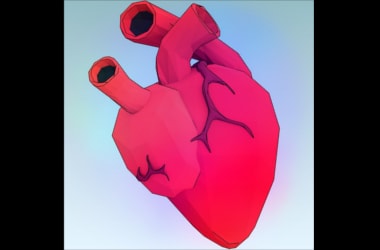
A new flexible polymer patch can improve the conduction of electrical impulses across damaged heart tissues without the need for stitches.
The patch has worked on animal models, is long lasting and can be stuck on the heart without the need for stitches.
Heart attacks create a scar which causes arrhythmia- electrically conducting polymer patch is designed to address this problem.
Conducting polymers work when they are dry, but most become non-conducting in a very short time when placed in bodily fluids. This suture-less patch represents a big advance.
It works well across a period and prevents the need for stitches, so it is minimally invasive and less damaging to the heart.
The patch is made to adhere to the heart tissue by shining a green laser on it.
Patch can explain how conductive materials interact with heart tissues and changes associated with heart attacks.
Components of Polymer Patcha. Chitosan
b. Polyaniline
c. Phytic Acid
- A film of chitosan, a polysaccharide is found in crab shells that is often used as a food additive.
- Polyaniline, a conducting polymer that is grown on top; and phytic acid, a substance found in plants which is added to the polyaniline to switch it to its conducting state are the other 2 components.